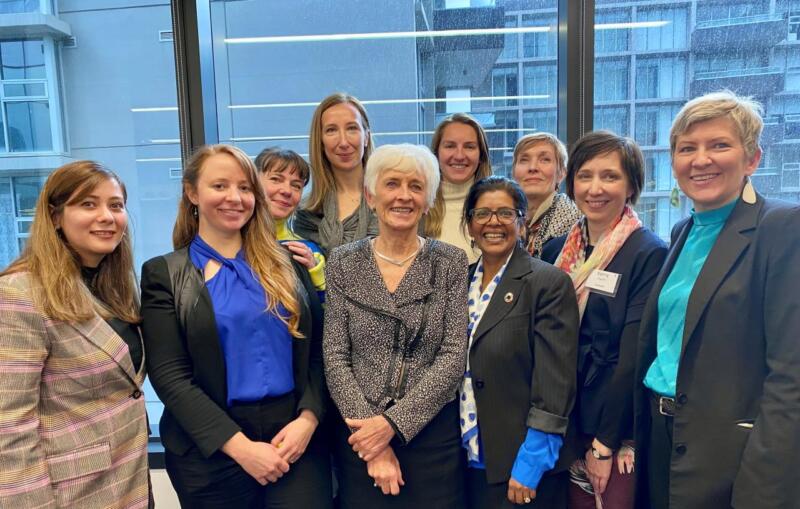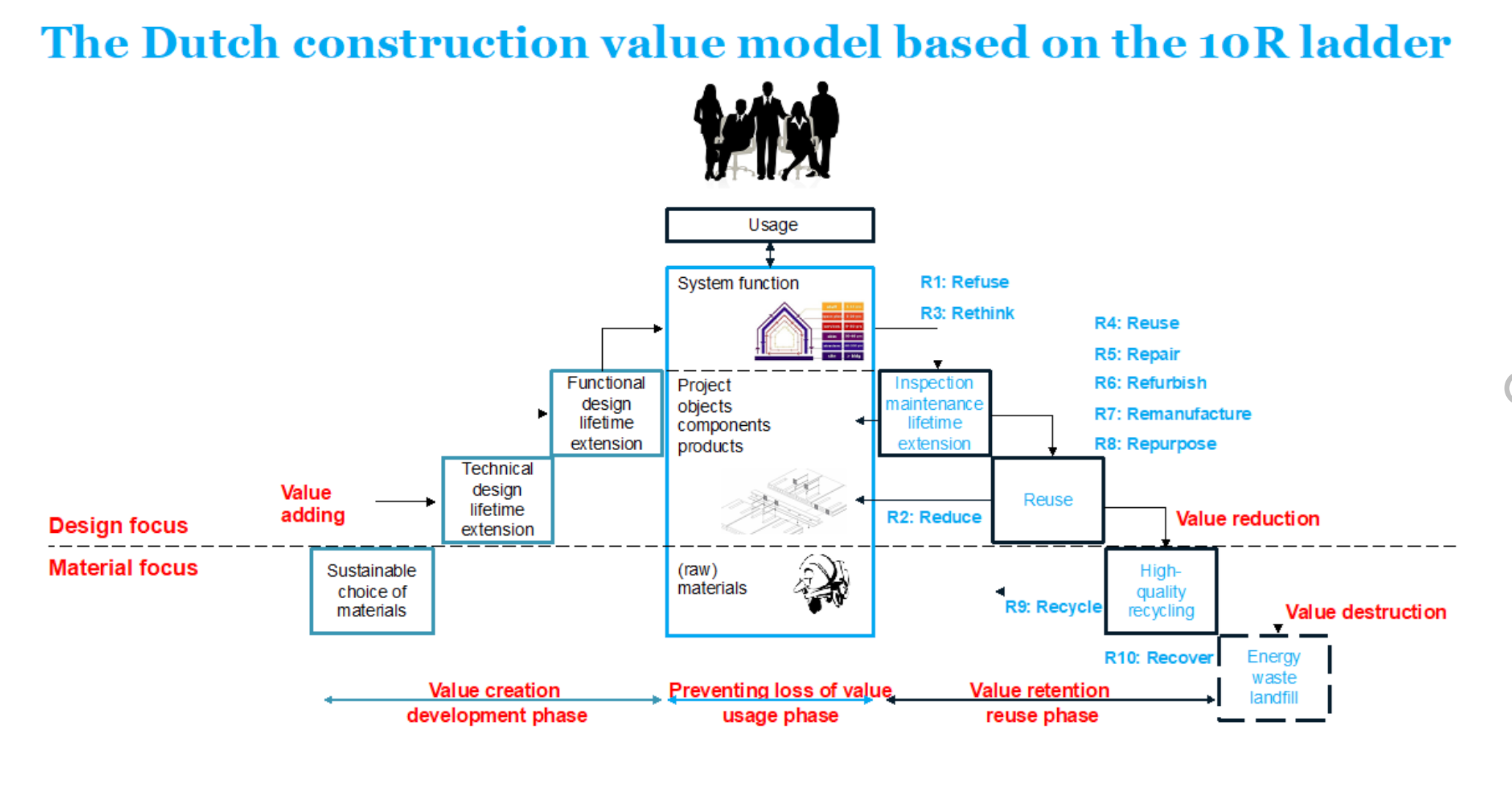Australia Part 4: Circular buildings and construction
August 16, 2022
In the fourth episode of Jacqueline Cramer’s blog reporting from Australia, Jacqueline shares this blog about the outcomes of the multiple workshops on the circular built environment held in Sidney and Brisbane. Around 300 people from all parts of the built environment supply chain joined to hear the lesson learnt from The Netherlands and the “coalition of the willing” to start action towards circularity. Her agenda also included appointments with the Minister of the Environment of New South Wales, James Griffin, and government representatives about circular procurement and an official visit with representatives of the Australian Circular Economy Hub -Planet Ark to share learnings on the implementation of a network governance approach.
Read the full blog below.
If you missed out on one episode of her journey, read it here:
– Australia Part 3: Government Roles, Circular Procurement and Recycling
– Australia Part 2: Circular Cities, Textiles, Research and History
– Australia: Circular Economy Developments by Jacqueline Cramer

"The transition to a circular economy starts with coalition of the willing and a shared sense of urgency. No actor can realise a circular initiative alone"
Jacqueline Cramer, Supervisory board
Circular developments in the built and construction environment
The last two weeks in Sydney were -again- very fruitful and inspiring. The program was packed with appointments, including meetings with the Minister of the Environment of New South Wales, James Griffin, and government representatives about circular procurement. I also shared my experiences governing the transition to a circular economy with representatives of intermediary organizations at a wonderful meeting organized by Planet Ark’s Australian Circular Economy Hub (ACE Hub). There were also events focused on building and construction. As this industry is one of the key sectors that shows a clear interest in circular economy, I devote this blog, particularly to the outcomes of the workshops on the built environment.
The workshops were attended by market representatives of the building and construction sector itself (e.g. Built, Mirvac and Lendlease), recyclers (e.g. Bingo), and material suppliers (e.g. Wagners) but also by specific government departments, property councils and research institutes. They understand the urgency of dealing much more prudently with natural resources, but the experiences they shared were mainly stand-alone examples of buildings and construction works with circular design features. For instance, the Quay Quarter Tower building in Sydney (see picture) resulted from a collaboration with AMP Capital, Danish architecture firm 3XN/GXN, Arup engineers and Multiplex builders. The design upcycled the existing building to retain 66% of the building’s existing columns, beams and slabs and 95% of its internal walls. Also, Built. have reused an electricity substation and added extra floors to create a modern inner city building in Sydney. And Lend Lease has invested in two mass timber buildings in the Barangaroo precinct of Sydney. Preassembling parts of the timber has provided safety, quality and speed of construction benefits. Thus, lifetime extension and prefab have gained some traction, but more environmentally friendly materials (e.g. concrete and steel) have not yet.
Example of a circular office building: Quay Quarter Tower building

Although the frontrunners clearly seek business opportunities in engaging in circular economy, they are not used to taking collective leadership and jointly build a system change to circular building design and construction. During the workshops, the key question was how to scale up circular initiatives.
Workshop in Sydney on circular building and construction, organized by Built.

photo credits: Built.
In a mind mapping exercise carried out at the start of each workshop, cooperation was often mentioned as a key driver for change. But how to establish this cooperation was a major discussion point during the break-out sessions. At the end of each workshop, I summarized the main recommendations on how to spark the circular building transition based on the input of the participants. The main conclusions were to:
- Develop an incentive mechanism to reward circular initiatives (e.g. a star system, tax on virgin materials or another financial incentive)
- Introduce minimum circularity standards and performance-based standards
- Organize supply and demand through a common framework for circular procurement
- Start innovative pilot projects and make those bigger
- Collaborate among companies and join forces
- Demonstrate the value of design for circularity
- Educate ourselves and others via storytelling
- Create transparency, build databases, and develop material passports to underpin success
- Realize that the transition to a circular economy is a fundamental cultural change
- Share knowledge and experience to accelerate the learning process
During the two weeks in Sydney and the following week in Brisbane, I was also a guest speaker at various events about circular area development. In Sydney, the event co-organized by Planet Ark with the Greater Cities Commission on area development in six major areas, and in Brisbane with Deloitte on the upcoming Olympics in 2032 (see picture) was key to understanding how joint initiatives to build a circular economy can be taken. Similarly, we had the opportunity to have a fruitful dialogue with the Brisbane Airport Cooperation about the expansion of the airport and scaling up circular initiatives.
Workshop in Brisbane on circular area development with a focus on the Olympics in 2032

The planning of all these area developments is in the design stage, which provides ample possibilities to integrate circularity from the start and build on that in the project development phase and next in the users’ phase. Moreover, these developments need to be carried out together with different market parties and provides great opportunities for business and local government to incorporate circular building and circular procurement in the whole planning process.
The main conclusions of the workshops were:
- Develop a shared integrated vision and strategy of the whole area in the design phase and formulate key circular requirements upfront based on that.
- Install a dedicated coordinating team that oversees the overall planning, remains consistent over time, and ensures that the vision and strategy trickle down in the next project development phase and later on in the users’ phase.
- Start in time with preparing the integration of circularity procurement requirements in project development and agree upon ambition targets with market parties that will be realized over time.
- Show progress through transparent data and examples of circular initiatives taken.
The Construction model developed in the context of the Dutch Concrete Agreement clearly serves as a good starting point to embark on this journey. The slide included below has been widely distributed.

My conclusion is that the interest in circular building and construction is growing. The first icon projects have been carried out by individual companies, but scaling up is not yet taking place because companies are not used to cooperate on issues like this. The best way to move from icon projects to scaling up is to start with a number of large-scale, circular area developments. Here companies, governments and commissioning parties are doomed to join forces. Through the implementation of circular procurement requirements in the design and project development phases, the area development can be steered into a circular direction. The learnings drawn from these large-scale area developments can be the input for the preparation of circular procurement guidelines that can be applied in all building and construction activities in Australia.
Next time I’ll report on the circular textile initiatives, which is also a sector with great potential here in Australia.
